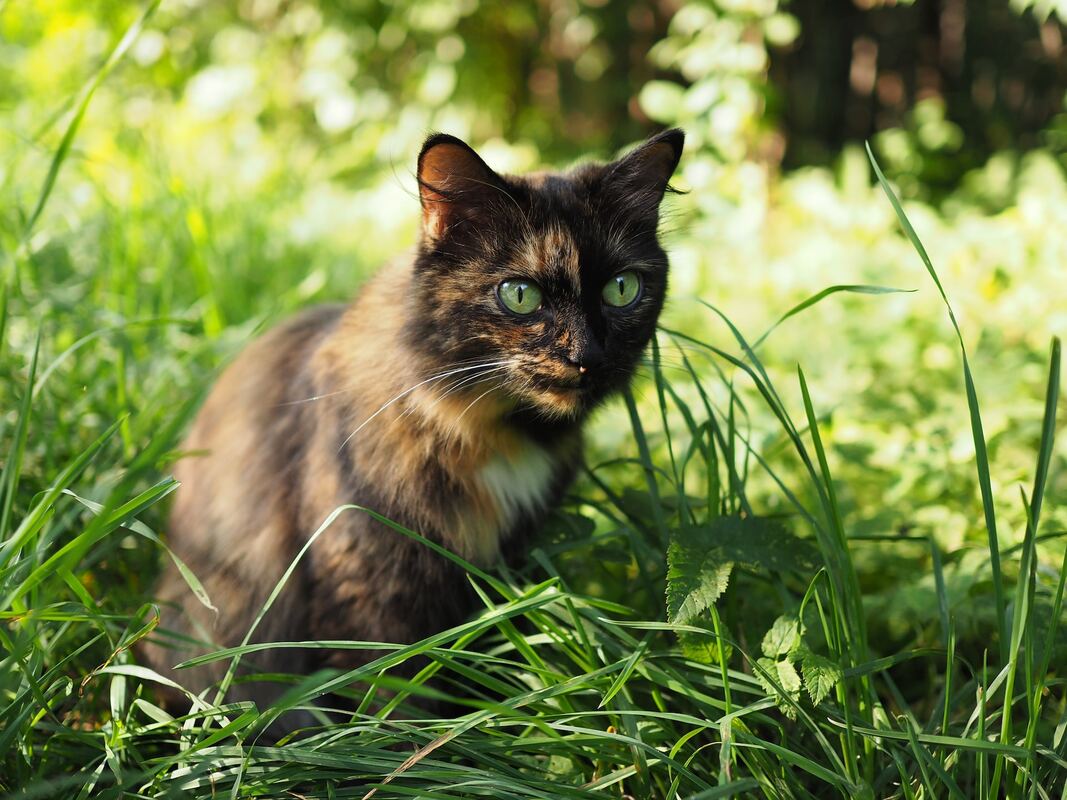|
Can a Feral Cat Become a House Cat?
Seven and a half years ago, little Daphne strolled up to me in my backyard and meowed at me, begging for food and water. She was extremely thin and dehydrated but followed me to the door and waited as I went inside to bring her some nourishment. The rest is history! I knew instantly from her behavior that she had been abandoned by some horrible person. It was easy to tell that she trusted humans and knew how to ask for help. I was so glad she found me so quickly, because who knows what could have happened to her living out in the elements by herself. Daphne was simply a stray cat and there is a huge difference between a stray and a feral. I often hear customers interchange the 2 terms so let’s discuss the vast differences and what to do if you find either one. How to Tell if A Cat is Feral Years ago, I was awakened to a guttural howling sound and went outside to look. I could see movement by the fence. There sat a tiny little kitten howling and crying. As I approached it, it went from adorable crying to a huge lion roar. That was not an abandoned little house kitten but a straight-up feral kitten who did not want to be around a human. She definitely did not want to be touched or assisted. I slowly backed away, as I did not want to confront this wild kitten. It was as wild as if I had found a baby kit (fox) or opossum. You can usually tell if a cat is feral if:
Feral kittens do have some potential to be rescued and turned into a domestic cat. The earlier this can happen, the better. Kittens need to be taken from a feral colony or mother around 4-6 weeks. Any earlier and there could be health or weaning issues. As with any unknown cat, be very careful to not be bitten or scratched. Feral cats can be particularly dangerous since you won’t know any health or disease history. If the cat is still present, it will have to go into quarantine until the health department has given an all-clear for rabies or other diseases. Adult feral cats are typically untameable and will stay wild and ferocious to humans. They have never interacted with humans and do not have the skill set to do so. Or the will to learn how. What To Do With a Feral Cat So what happens if a feral cat arrives under your porch to live?
All of these tactics require patience. You will not instantly see results. Even domesticated cats have a hard time adjusting to new people and places. One cat here at the spa took 2-3 weeks before she would stop growling, hissing and shaking her carrier. Eventually, she warmed up to us but still has her moments. Feral cats may be able to calm down somewhat around humans. However, you should never confuse them with a domesticated cat. Bottom line: feral cats are wild animals. Stray Cat Success Story Daphne was simply a stray cat that was once a person’s pet. She had learned how to properly interact with humans and live in a home. Stray cats are generally domestic cats that have been abandoned and tend to be friendly. But how can you tell? As with Daphne, they’ll approach you with their cute little head bumps, sniff you, maybe make that weird open mouth face, and of course, purr. Offering them food is an easy way to show they can trust you. I was warned “feed a stray and they’ll never go away” and I am proof that there is truth to that statement! The same is often true with ferals, but there is a limit. Feral cats are opportunistic. They’ll stay around while the food keeps coming, but they’re in survival mode. When the food stops, they aren’t sticking around to make friends. Feral cats are nearly impossible to groom. They are often prone to biting, hissing, growling and bloodshed. Caution should be used around attempting to even touch a feral and they really shouldn’t be adopted out. Many sweet domesticated cats need homes and are happy to have them. I’d personally recommend taking in these cats (who have been socialized) versus taking in a cat that is akin to a raccoon. Leave some food out and you never know, the sweetest cat ever may be hiding right in your backyard!
0 Comments
Leave a Reply. |
AuthorWhen Cari has some free time from all the kitties, she likes to share her knowledge of all things cat in this bi-monthly blog. Enjoy the read! Archives
June 2024
Categories |


 RSS Feed
RSS Feed